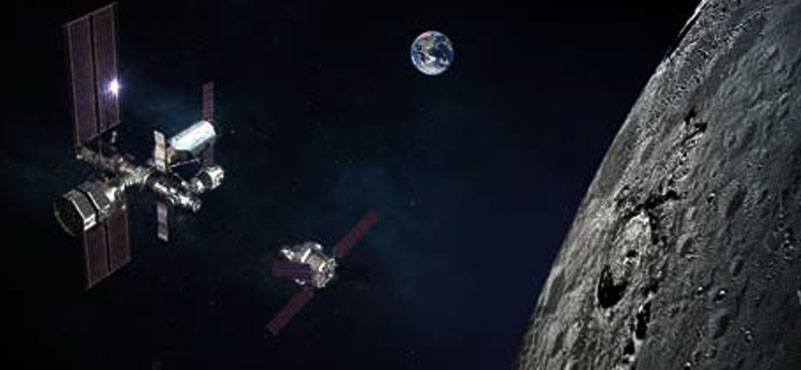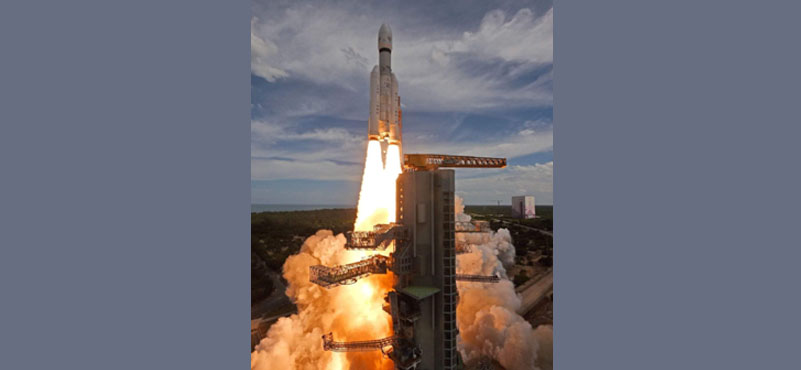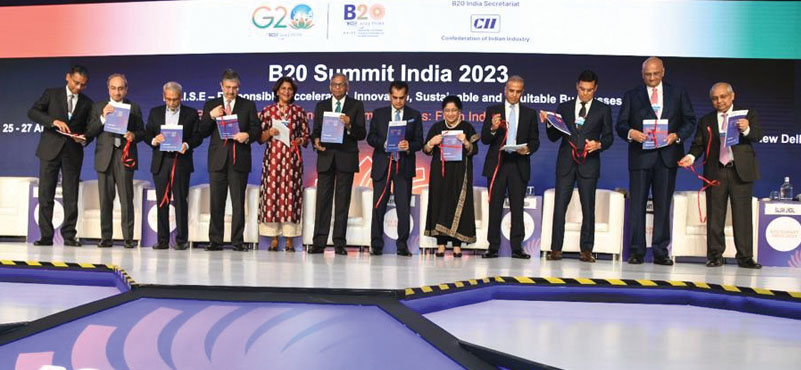In the present day Geo- political environment India cannot join the China group nor will China easily accept India. Our choice, therefore, in joining the Artemis Accord Group is most appropriate from all points of view- national advantage, independence to carry out our own deep space exploration and gain from technology being used under Artemis programme.
Introduction
The Deep Space activities are now divided into two spheres of influence: the US and China with Russia no more a strong force. The next prize is again the Moon which will determine an international acceptance of who is in the lead. While the first landing on the Moon took place in 1959 with the US flag and the Soviet Russia got left behind, the race is now between the US and China. This is a war of image and status and perhaps, future economic gains. The Space is now the newest frontier- the fourth frontier. It is reminiscent of the days when sea explorations to the New World were taking place from Europe in 1492 onwards with Spain & Portugal being the main contenders. The last vestige of international cooperation was when the International Space Station was set up in1998 as a multilateral agreement between USA, RUSSIA, European countries, Canada and Japan. It is 25 years old and has completed its life. Led by US with Russia and other US European allies, it is now past its prime.
Artemis Accords
However, after over 64 years, United States of America has again come up come up with the idea of going to the Moon with a group of like-minded countries, set up a camp and then move on to Mars. This is a new concept includes not only landing but also habitating and further mining of the Moon. The US has floated the concept of Artemis (a Greek moon goddess often portrayed as a virgin huntress) Accords which is open for Agreements with like-minded countries to go to the moon and thereafter go to the Mars. It wants to sign up a multilateral Agreement with other countries for common peaceful purposes. The concept includes landing a woman and a person of colour on Moon by 2024 but also to prepare for a future manned visit to Mars by 2030s. National Aeronautical and Space Administration (NASA) of US is leading the Artemis program and feels that international partnerships will play a key role in achieving a sustainable and robust presence on the Moon while preparing to conduct a historic human mission to Mars.
Eight founding countries namely, the United States in the lead with Australia, Canada, Italy, Japan, Luxembourg, United Arab Emirates and United Kingdom signed on 13th October 2020 a non- binding multilateral Agreement which is open to all countries to sign. India became the 28th country to sign the Accord in June 2023 during the visit of the Prime Minister to Washington. The US believes that international partnerships will play a key role in achieving a sustainable and robust presence on the Moon while preparing to conduct a historic human mission to Mars.
What are the implications of signing the Artemis Accords for India.?
What are Artemis Accords: the Preface of the Accord states:
“AFFIRMING the importance of compliance with the Treaty on Principles Governing the Activities of States in the Exploration and Use of Outer Space, Including the Moon and Other Celestial Bodies, opened for signature on January 27, 1967 (“Outer Space Treaty”) as well as the Agreement on the Rescue of Astronauts, the Return of Astronauts and the Return of Objects Launched into Outer Space, opened for signature on April 22, 1968 (“Rescue and Return Agreement”), the Convention on International Liability for Damage Caused by Space Objects, opened for signature on March 29, 1972 (“Liability Convention”), and the Convention on Registration of Objects Launched into Outer Space, opened for signature on January 14, 1975 (“Registration Convention”); as well as the benefits of coordination via multilateral forums, such as the United Nations Committee on the Peaceful Uses of Outer Space (“COPUOS”), to further efforts toward a global consensus on critical issues regarding space exploration and use; and…” Thus Artemis Accords want to remain with the existing legal Space framework.
Background
The Outer Space Treaty (OST-1967) is the main international treaty with reference to Space and is ratified by more than 100 countries. The key provisions of the Outer Space Treaty includes prohibiting nuclear weapons in space; limiting the use of the Moon and all other celestial bodies to peaceful purposes; establishing that space shall be freely explored and used by all nations; and finally, precluding any country from claiming sovereignty over outer space or any celestial body.
The OST also declares that space is an area for free use and ‘exploration’ by all and “shall be the province of all mankind”. What does this mean? While accepting that claims sovereignty or appropriation by a government is not allowed, does it allow exploitation or private appropriation? The US is clear that it does by stating that “The Signatories affirm that the extraction of space resources does not inherently constitute national appropriation under Article II of the Outer Space Treaty.”
However, the Accord does state, “Signatories emphasise that the extraction and utilisation of space resources, including any recovery from the surface or subsurface of the Moon, Mars, comets, or asteroids, should be executed in a manner that complies with the Outer Space Treaty and in support of safe and sustainable space activities. The Signatories affirm that the extraction of space resources does not inherently constitute national appropriation under Article II of the Outer Space Treaty, and that contracts and other legal instruments relating to space resources should be consistent with that Treaty.”
 The Moon Agreement which was adopted by the UN General Assembly in1979 could only be ratified by 5 countries in 1984 to enable it to enter into force although there were 18 signatories. Why Moon Agreement was not signed or ratified by major space faring nations?
The Moon Agreement which was adopted by the UN General Assembly in1979 could only be ratified by 5 countries in 1984 to enable it to enter into force although there were 18 signatories. Why Moon Agreement was not signed or ratified by major space faring nations?
The Moon Agreement was not ratified by any major spacefaring country including India. Saudi Arabia, which had ratified the Agreement has withdrawn from it. The reason which we can surmise is that it disallows exploitation of the wealth of moon. We also presume that this was the reason why India did not ratify the Moon Agreements after having signed it earlier. If this is the case then why this lament by Indian space experts that India should not join the Artemis Accords. India is, therefore, as much interested in exploitation of Moon and celestial bodies as the US. The only difference is that US are bold to talk about it, while India tries to maintain a softer view.
The US has been bold and outspoken about the exploitation issue by passing of a US law as follows: In 2015, US Congress passed a law explicitly allowing American companies and citizens to use moon and asteroid resources. Further, US President has recently signed an executive order called “Encouraging International Support for the Recovery and Use of Space Resources,”. The policy stresses that the current regulatory regime — notably, the 1967 Outer Space Treaty — allows the use of such resources, “The pact also aims to provide a framework under international law for companies to own the resources they mine”, A similar type of legislation has been passed by Liechtenstein which offers a legal framework for licensing of resources mined in space.
Geopolitical situation in Space
China and the Moon race: While US announced the project of Artemis Accords and kept it open to all countries China has not shown any interest in it. Meanwhile, China has announced its own lunar exploration programme called The Chinese Lunar Exploration Program (CLEP). CLEP is divided into four main operational phases, with each mission serving as a technology demonstrator in preparation for future missions. International cooperation in the form of various payloads and a robotic station. Change1 launched on 24 October 2007 aboard a Long March 3A rocket, scanned the entire Moon in unprecedented detail, generating a high-definition 3D map that would provide a reference for future soft landings. The second is landing and roving on the Moon, as Chang’e 3 did in 2013 and Chang’e 4 did in 2019. The third is collecting lunar samples from the near-side and sending them to Earth, a task for the future Chang’e 5 and Chang’e 6 missions. The fourth phase consists of development of a robotic research station near the Moon’s south pole. The program aims to facilitate a crewed lunar landing in the 2030s and to possibly build an outpost near the south pole. Russia has also joined the Chinese programme CLEP. It has also announced for setting up an International Lunar Research Station( ILRS) jointly with Russia with a MOU signed in 2021. It has projected crew landing by 2030s.
Choices before India
If India chooses not to join either group and hopes to reach the Moon and Mars, it is indulging in space fantasy. The need for joint collaboration with either Artemis programme or with the Chinese- Russian programme is now an essential requirement for a country like India which is well qualified to set up its own camp on moon but with too many handicaps, both technical and financial. The advantage of joining either group is immense. However, remaining aloof can only lead to being left behind although India is independently doing its own Moon exploration currently with Chandrayaan
In the present day Geo- political environment India cannot join the China group nor will China easily accept India. Our choice, therefore, in joining the Artemis Accord Group is most appropriate from all points of view- national advantage, independence to carry out our own deep space exploration and gain from technology being used under Artemis programme.
ABOUT THE AUTHOR
 Dr Sanat Kaul is Chairman of International Foundation for Aviation, Aerospace and Drones.
Dr Sanat Kaul is Chairman of International Foundation for Aviation, Aerospace and Drones.




































